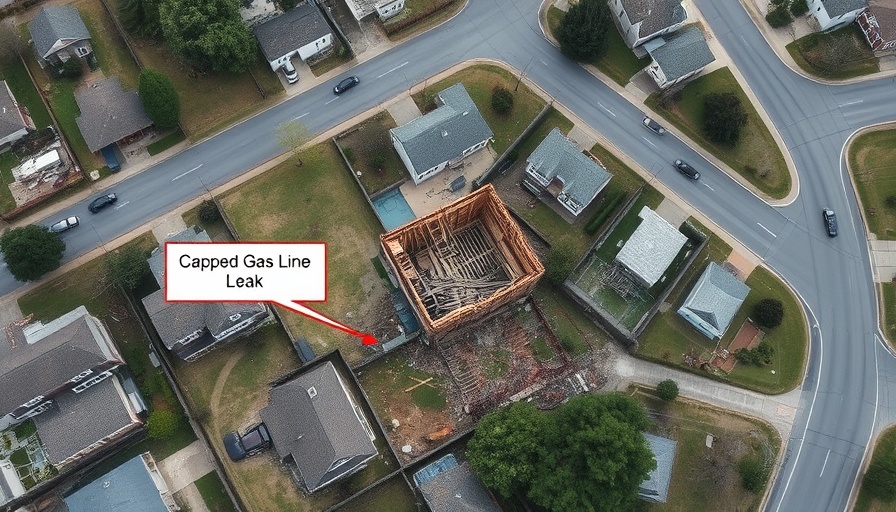
Understanding the Tragedy: The Lexington Gas Explosion
On April 9, 2023, a tragic gas explosion rocked Lexington, Missouri, claiming the life of a 5-year-old boy and severely injuring several family members. This catastrophic incident occurred when a subcontractor, while installing fiber-optic cables, struck an uncapped section of a natural gas line that was not properly marked. As background from the National Transportation Safety Board indicates, the demise stemmed from failures in utility management and safety protocol adherence.
The Lawsuit: A Call to Accountability
In the wake of this disaster, Missouri Attorney General Andrew Bailey has filed a lawsuit against Liberty Utilities. He asserts that the company falsely assured the subcontractor that all gas pipelines were adequately marked prior to excavation. The lawsuit underscores significant legal ramifications by citing violations of state laws mandating the timely marking of underground utilities, specifically requiring utilities to respond to location requests and ensure accurate markings within two working days.
Utilities and Community Safety: A Growing Concern
This incident raises critical questions about community safety and the responsibilities of utility companies. The lawsuit points out that their negligence not only endangered lives but also caused considerable property damage throughout the neighborhood. As a community-focused issue, it emphasizes the tragic consequences of improper utility management, suggesting that regulatory frameworks must be strengthened to prevent such mishaps in the future.
The Broader Implications for Construction Professionals
For business owners, property developers, and facility managers, the Lexington explosion serves as a stark reminder of the intertwined nature of construction practices and safety standards. The ramifications of operational negligence extend beyond legal penalties; they can inhibit the trust that the community places in developers and contractors. As the attorney general's lawsuit seeks to penalize Liberty Utilities and mandate further safety training, those involved in the construction industry are urged to prioritize safety practices and communication protocols at every stage of project development.
Future Compliance: Best Practices Moving Forward
To mitigate risks associated with underground utility excavations, companies should adopt best practices, such as:
- Enhanced Training Programs: Regularly scheduled training on the latest utility marking requirements and safety protocols can equip staff with essential knowledge.
- Improved Communication with Utility Providers: Establishing strong lines of communication with utility companies can help ensure timely and accurate responses to locate requests.
- Utilization of Technology: Incorporating advanced technology and building information modeling (BIM) into construction practices can help visualize underground utilities, reducing risks considerably.
By embracing these practices, construction professionals can enhance safety measures, foster community trust, and reduce the likelihood of similar tragedies in the future.
Conclusion: Taking Action Toward Safer Communities
The recent events in Lexington highlight critical missteps in utility management that ended in tragedy. As we navigate the complexities of construction and community development, it is imperative that all stakeholders remain vigilant and prioritize safety and compliance. By advocating for enhanced standards and accountability systems within the industry, we can work collaboratively to build not only structures but also safer communities.
 Add Row
Add Row  Add
Add 




 Add Row
Add Row  Add
Add 

Write A Comment